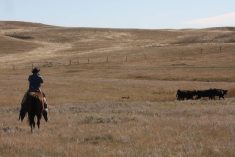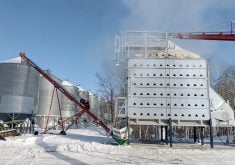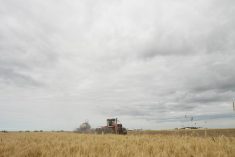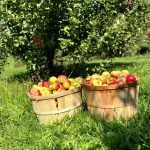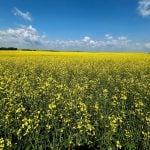If you’re uncertain about what to plant this spring, you’re not alone. Given the markets and a wet, late harvest last fall, a lot of producers are uncommitted, a veteran crop specialist says.
“It’s kind of up in the air,” said Scott Chalmers, manager of the research farm in Melita, Man., who has worked there 13 years. There is a shortage of durum in North America but not of soybeans, and all the other stocks are there.
“I know a lot of guys aren’t going to plant soybeans here as much as they have in the past. I think its price just isn’t strong enough for the risks,” he said. “Last year with the late harvest and soggy harvest, a lot of guys kind of got shy,” and some won’t have the cash flow to support that late a crop.
Read Also

Fendt takes a combine on the road in the U.S.
Putting an Ideal combine in fields across different regions has given the brand a chance to prove that the combine is capable of performing well in a variety of conditions.
Wheat and oats offer less risk. Peas are an option but aren’t that strong, he said.
“Canola is sort of there, but it costs a lot of money.”
To save money, farmers are likely to reduce input costs this spring. One way is to cut back herbicide applications on corn from two to one. Another is to reduce fertilizer and seed treatment.
A lot of Manitoba crops near Boissevain and Souris, including soybeans, wheat, oats and corn, remain in the field and are greatly diminished in value.
“I would say a lot of the cereals are just feed.”
Farther east into the Interlake region, there is a feed shortage, especially if pastures don’t green up well this spring, he said.




